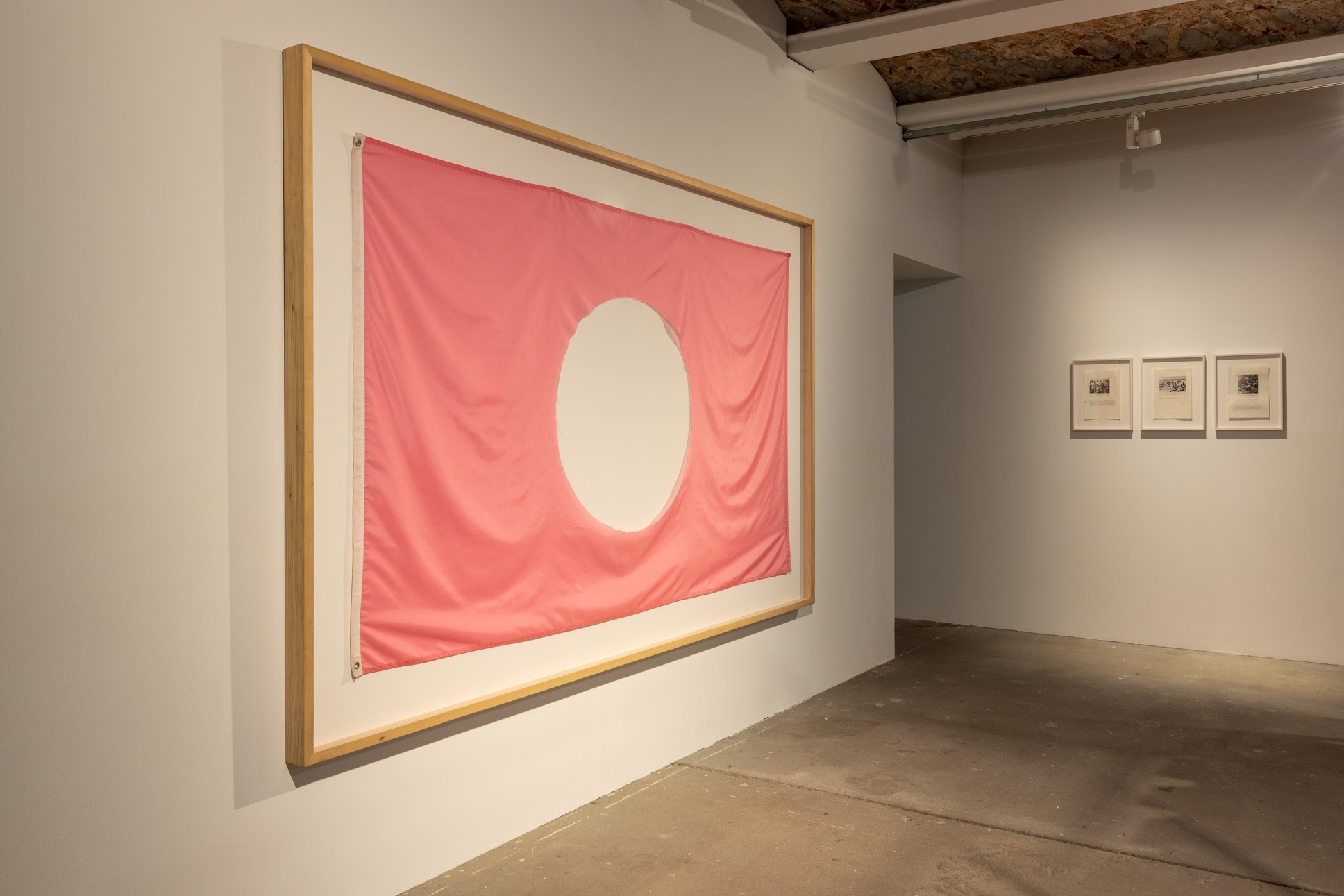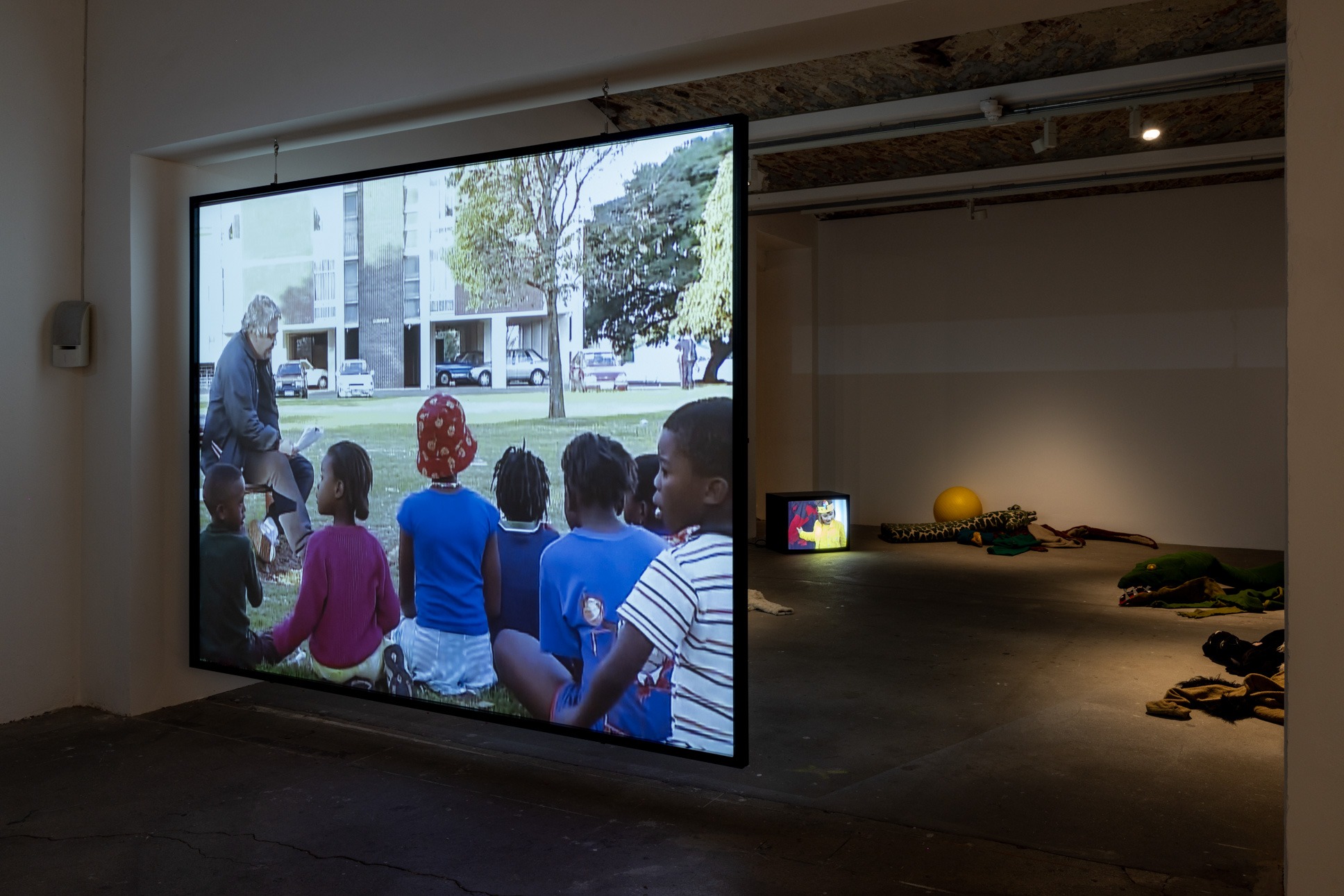Peter Friedl
Report 1964–2022
19 Feb - 01 May 2022

Installation view of the exhibition Peter Friedl: Report 1964–2022 at KW Institute for Contemporary Art, Berlin 2022; Photo: Frank Sperling

Installation view of the exhibition Peter Friedl: Report 1964–2022 at KW Institute for Contemporary Art, Berlin 2022; Photo: Frank Sperling

Peter Friedl, New Kurdish Flag, 1994–2001 Nylon (left), Ohne Titel, 1971. Fotocollage und Schreibmaschine auf Papier (rechts), Installation view of the exhibition Peter Friedl: Report 1964– 2022 at KW Institute for Contemporary Art, Berlin 2022. Collection KADIST, Paris, courtesy the artist; Photo: Frank Sperling

Peter Friedl, The Diaries (detail), 1981–2016. Note books, vitrines, oak, glass. Installation view of the exhibition Peter Friedl: Report 1964–2022 at KW Institute for Contemporary Art, Berlin
2022. Courtesy the artist; Photo: Frank Sperling
2022. Courtesy the artist; Photo: Frank Sperling

Peter Friedl, Rehousing, 2012–2019. Mixed media, dimensions variable (left), Liberty City, 2007. Video, color, sound (right). Installation view of the exhibition Peter Friedl: Report 1964–2022 at KW Institute for Contemporary Art, Berlin 2022. Collection Gaby & Wilhelm Schürmann and Collection Marco Rossi, Turin, courtesy the artist, Guido Costa Projects, Turin, and Nicolas Krupp, Basel; Photo: Frank Sperling

Peter Friedl, Rehousing, 2012–2019. Mixed media, dimensions variable (in the foreground), Dummy, 1997. video, color, sound (in the background). Installation view of the exhibition Peter Friedl: Report 1964–2022 at KW Institute for Contemporary Art, Berlin 2022. Collection Gaby & Wilhelm Schürmann and Collection Marco Rossi, Turin, commissioned by documenta X, Kassel, Collection MACBA. Museu d’Art Contemporani de Barcelona, Barcelona, Collection Video Forum, Neuer Berliner Kunstverein, Berlin, courtesy Guido Costa Projects, Turin, and Nicolas Krupp, Basel; Photo: Frank Sperling

Peter Friedl, Rehousing, 2012–2019. Mixed media, dimensions variable. Installation view of the exhibition Peter Friedl: Report 1964–2022 at KW Institute for Contemporary Art, Berlin 2022. Collection Gaby & Wilhelm Schürmann and Collection Marco Rossi, Turin, courtesy Guido Costa Projects, Turin, and Nicolas Krupp, Basel; Photo: Frank Sperling

Peter Friedl, Rehousing, 2012–2019. Mixed media, dimensions variable. Installation view of the exhibition Peter Friedl: Report 1964–2022 at KW Institute for Contemporary Art, Berlin 2022. Collection Gaby & Wilhelm Schürmann and Collection Marco Rossi, Turin, courtesy Guido Costa Projects, Turin, and Nicolas Krupp, Basel; Photo: Frank Sperling

Peter Friedl, King Kong, 2001. Single-channel video installation, color, sound, Peter Friedl (detail), 1998. Garments, mixed media, dimensions variable. Installation view of the
exhibition Peter Friedl: Report 1964–2022 at KW Institute for Contemporary Art, Berlin 2022. Collection Martin Z. Margulies, Miami Collection Musée d’Arts de Nantes, Collection Walker Art Center, Minneapolis, and Collection La Gaia, Busca, courtesy the artist; Photo: Frank Sperling
exhibition Peter Friedl: Report 1964–2022 at KW Institute for Contemporary Art, Berlin 2022. Collection Martin Z. Margulies, Miami Collection Musée d’Arts de Nantes, Collection Walker Art Center, Minneapolis, and Collection La Gaia, Busca, courtesy the artist; Photo: Frank Sperling

Installation view of the exhibition Peter Friedl: Report 1964–2022 at KW Institute for Contemporary Art, Berlin 2022; Photo: Frank Sperling
Report 1964–2022 is Peter Friedl’s (b. 1960) most extensive institutional survey in Germany to date. Adopting a variety of genres, media, and forms of display, Friedl’s works seek to explore the construction of history and the concepts within our political and aesthetical consciousness. His artistic practice is aimed at creating new models of narration in which time, permanent displacement, and critical intimacy all play a central role.
Friedl often refers to and employs theatrical representation and poetics in his works (e.g., scale models, tableaux vivants, props, puppet theatre, restaging) to highlight hidden or overlooked mechanisms intrinsic to historiography, language, and cultural identities. Archival rigor is the key organizational strategy behind some of his long-term projects, which have strict chronology and other principles of order call into question notions of visibility and context. Drawing as a lyrical voice, which documents and comments on both personal and socio-political histories, is equally important in Friedl’s oeuvre.
As a monographic exhibition, Report 1964–2022 brings together works from five decades. Its title stems from an eponymous video installation that Friedl created for documenta 14, which explores the permeability of language and the boundaries of identity. The exhibition is accompanied by a publication containing existing as well as newly commissioned essays on the artist’s work written over the past twenty years.
Curator: Krist Gruijthuijsen
Assistant curator: Léon Kruijswijk
Friedl often refers to and employs theatrical representation and poetics in his works (e.g., scale models, tableaux vivants, props, puppet theatre, restaging) to highlight hidden or overlooked mechanisms intrinsic to historiography, language, and cultural identities. Archival rigor is the key organizational strategy behind some of his long-term projects, which have strict chronology and other principles of order call into question notions of visibility and context. Drawing as a lyrical voice, which documents and comments on both personal and socio-political histories, is equally important in Friedl’s oeuvre.
As a monographic exhibition, Report 1964–2022 brings together works from five decades. Its title stems from an eponymous video installation that Friedl created for documenta 14, which explores the permeability of language and the boundaries of identity. The exhibition is accompanied by a publication containing existing as well as newly commissioned essays on the artist’s work written over the past twenty years.
Curator: Krist Gruijthuijsen
Assistant curator: Léon Kruijswijk
